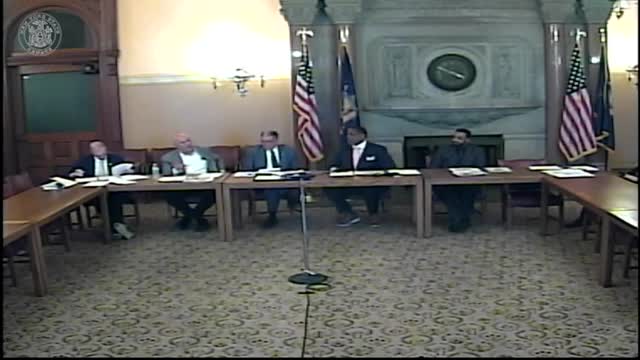Energy expert debates carbon capture and nuclear viability in New York power plans
March 18, 2025 | 2025 Legislature NY, New York
This article was created by AI summarizing key points discussed. AI makes mistakes, so for full details and context, please refer to the video of the full meeting. Please report any errors so we can fix them. Report an error »

Concerns over battery technology safety and energy density dominated discussions at the Senate Standing Committee on Energy and Telecommunications meeting on March 18, 2025. A key speaker highlighted the risks associated with lithium-ion batteries, referencing multiple incidents, including a significant fire at Moss Landing that led to evacuations and a disaster area declaration. The speaker emphasized that the potential installation of similar systems in densely populated areas, like Ravenswood, could pose severe risks to millions of residents.
The conversation shifted to the challenges of meeting New York's energy goals under the Climate Leadership and Community Protection Act (CLCPA). Participants debated the feasibility of relying on renewable sources like wind and solar, citing their intermittent nature and low energy density. One speaker pointed out that achieving the necessary energy output would require vast land areas for solar and wind farms, raising concerns about practicality and cost.
The discussion also touched on the potential of carbon capture technology as a solution to reduce emissions from fossil fuel plants. Advocates argued that combined cycle plants with carbon capture could significantly lower carbon emissions while maintaining efficiency. However, skepticism remained regarding whether these measures alone would suffice to meet the state's ambitious climate goals.
As the meeting concluded, the urgency for a balanced approach to energy generation was clear. Stakeholders acknowledged the need for a diverse energy portfolio, including renewables, nuclear, and advanced technologies, to ensure a reliable and safe energy future for New Yorkers. The committee's ongoing discussions will likely shape the state's energy policy in the coming years, as they navigate the complexities of safety, efficiency, and sustainability.
The conversation shifted to the challenges of meeting New York's energy goals under the Climate Leadership and Community Protection Act (CLCPA). Participants debated the feasibility of relying on renewable sources like wind and solar, citing their intermittent nature and low energy density. One speaker pointed out that achieving the necessary energy output would require vast land areas for solar and wind farms, raising concerns about practicality and cost.
The discussion also touched on the potential of carbon capture technology as a solution to reduce emissions from fossil fuel plants. Advocates argued that combined cycle plants with carbon capture could significantly lower carbon emissions while maintaining efficiency. However, skepticism remained regarding whether these measures alone would suffice to meet the state's ambitious climate goals.
As the meeting concluded, the urgency for a balanced approach to energy generation was clear. Stakeholders acknowledged the need for a diverse energy portfolio, including renewables, nuclear, and advanced technologies, to ensure a reliable and safe energy future for New Yorkers. The committee's ongoing discussions will likely shape the state's energy policy in the coming years, as they navigate the complexities of safety, efficiency, and sustainability.
View full meeting
This article is based on a recent meeting—watch the full video and explore the complete transcript for deeper insights into the discussion.
View full meeting
